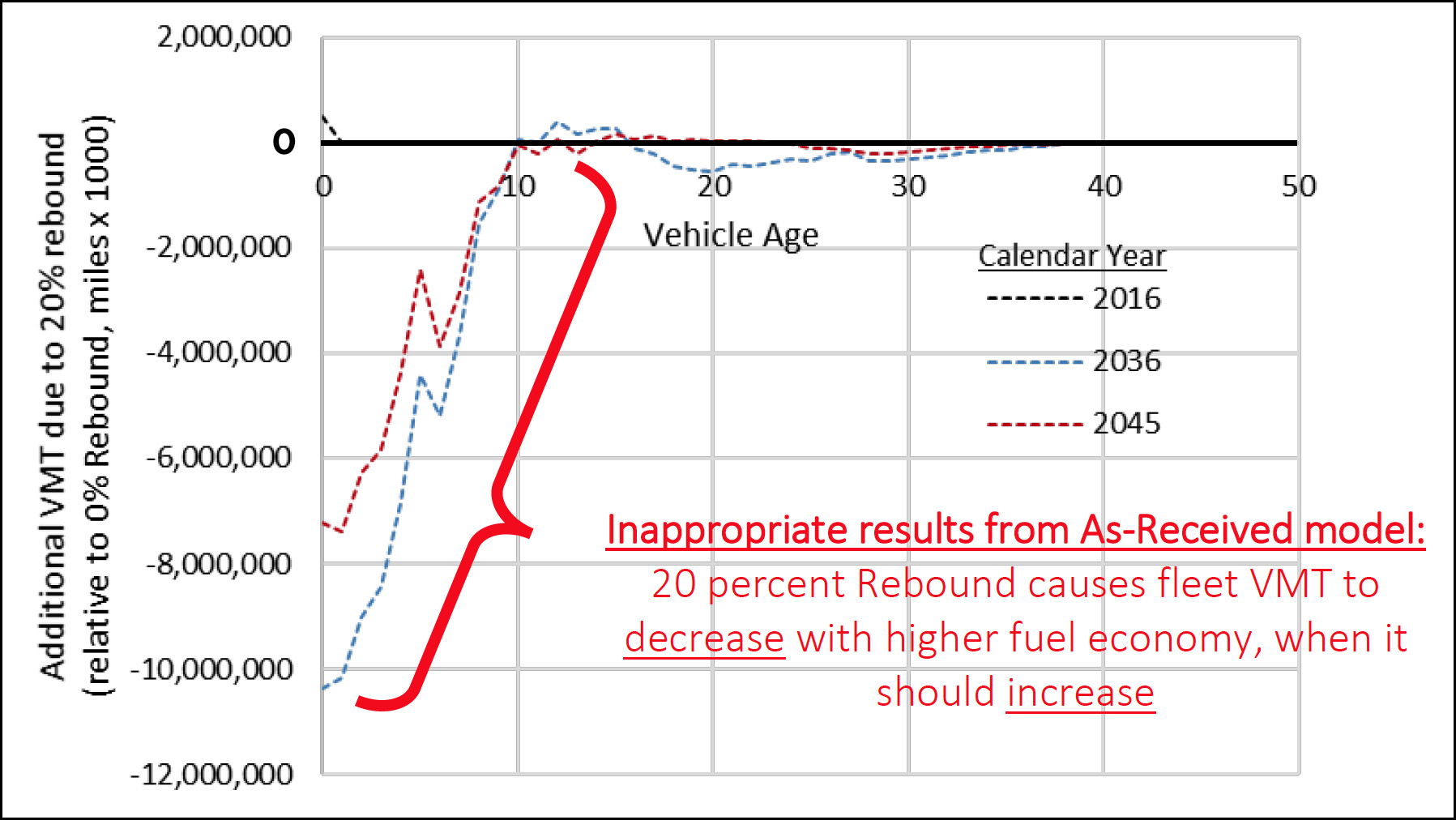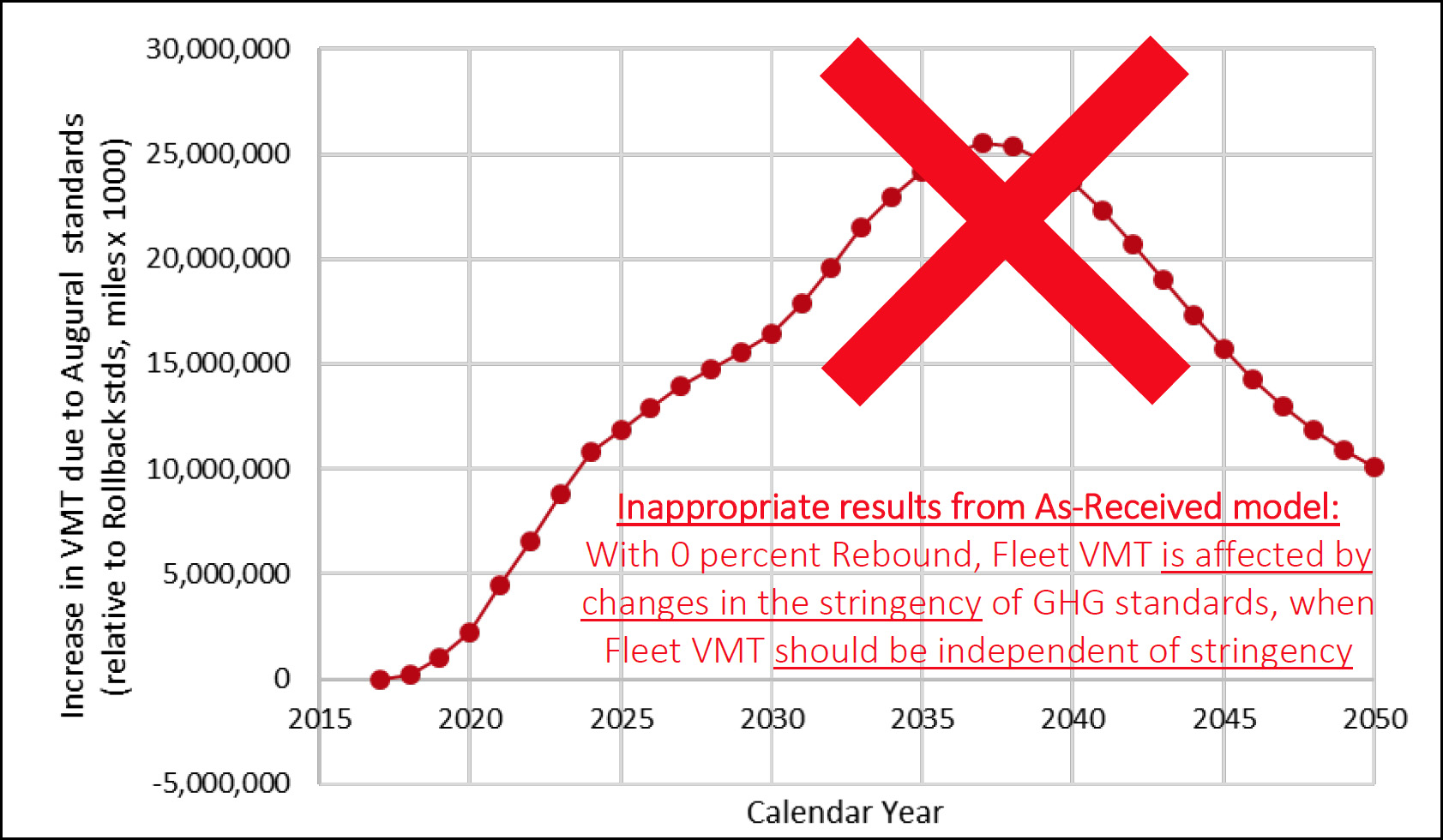As you probably know, President Obama put in place higher mileage standards for new cars before he left office. President Trump, naturally, wants to get rid of them. This requires a report demonstrating that the Obama standards would be bad, so he ordered OMB Director Mick Mulvaney to produce one.¹ Mick saluted and scurried off to carry out his boss’s order with the help of the Department of Transportation, which is conveniently run by Elaine Chao, the wife of Senate majority leader Mitch McConnell.
Today the EPA made public an … um … assessment of the report that it wrote a couple of months ago. The EPA’s assessment “privately challenged the Trump administration’s rationale for freezing Obama-era mileage standards,” according to the Associated Press, and that made me curious to see it. Eventually I did, and now I’m going to share a small part of it with you. Fair warning, though: even for chart nerds, this is pretty tedious. But I promise that it’s worth it, for reasons that I hope will become clear.
Scrappage
First off, you have to estimate the effect of higher mileage standards on the total size of the automobile fleet. But the Trump version makes no sense:
The As-Received² model estimates that the Augural³ standards will reduce the year-over-year annual increase sales of new vehicles by approximately 8,000 vehicles on average between CY2021 and CY2032. However, during the same period, the As-Received model estimates that the used fleet will grow by an average of 512,000 vehicles per year, far exceeding the decrease in new vehicle sales. It’s hard to imagine any real-world scenario under which over 60 additional used vehicles are retained for each new vehicle that the sales model predicts will be unsold as a result of the higher new vehicle prices.
And here’s the chart:

As you can see, there’s really only a small difference between the red line and the dashed black line. Who would even notice that it goes in the wrong direction and is therefore projecting that a higher vehicle cost will produce a bigger fleet? But it does, and this is “not consistent with the basic principle of supply and demand,” as the EPA says blandly.
The Rebound Effect
If gas mileage gets better, cars will use less gasoline. Hooray! However, there’s also something called the rebound effect, which means that since cars are using less gasoline, people will tend to drive a little more because it’s cheaper to do so. The result is that although improving gas mileage has a positive effect by reducing the amount of gas used per mile, it also has a small negative effect because people drive more miles. Sometimes life is like that.
Somehow, though, the OMB/DOT folks got this 180 degrees backward. Here’s the chart:

Notice that the dashed lines are all below zero, which means that OMB is projecting lower VMT (vehicle miles driven) from the Obama standards, even though the Obama standards produce higher gas mileage and therefore should produce a positive rebound. As a consequence, this would also project a negative rebound from repealing the Obama standards, which is totally wrong.
Yet More Rebound
It gets even worse. The rebound effect is fairly small, so what if we just assumed it was zero?
With no rebound, we would not expect to see any change in total VMT….However, even with 0 percent rebound, the As-Received model does produce total VMT values that are influenced by stringency level. See Figure 6, below. We believe that this zero-rebound VMT growth is an artifact of the disconnect between the sales model, scrappage model and mileage accumulation schedules described with Issue #1. And while this problem is not directly related to the model’s calculation of the rebound effect, it points to the importance of carefully considering how the various elements are integrated when making changes or additions to a model.
This time, just to make their point clear, EPA places a gigantic red X through the incorrect numbers:

This should be a straight line, not a curve. If there’s no rebound effect, how can the rebound effect produce anything other than a result of zero all the way across?
What It All Means
There’s more, but I’ll stop here. Even for chart enthusiasts, enough is enough.
In any case, the point here is not that the OMB/DOT charts are wrong. The point is that they’re totally disconnected from reality. Basically, somebody whomped up a spreadsheet and then played around with the numbers until they got ones they liked. The fact that it implied gravity was negative or the sky was green never occurred to them. To them, this wasn’t an exercise in creating a model of the real world, it was an exercise in fiddling with spreadsheet cells until the results were ones the boss would like.
And who cares anyway? It’s not like anyone in the press is ever going to look carefully at this stuff. Even the ones who know better will describe it as a “tense technical battle between experts at two separate government agencies” because they’re not allowed to say that the OMB and DOT just bullshitted some numbers and then called it a day. But that’s what happened, and that’s why it was worth wading through a bit of this. This is how the Trump administration works. It’s how the Republican Party works these days. These guys make Karl Rove look like Einstein.
¹I assume it was Mick Mulvaney, anyway. I suppose it might have been someone else.
²“As Received” means the version EPA received from OMB.
³Don’t even ask. For some reason, the Trump report uses “augural” to refer to its proposed future standards. God only knows why.














